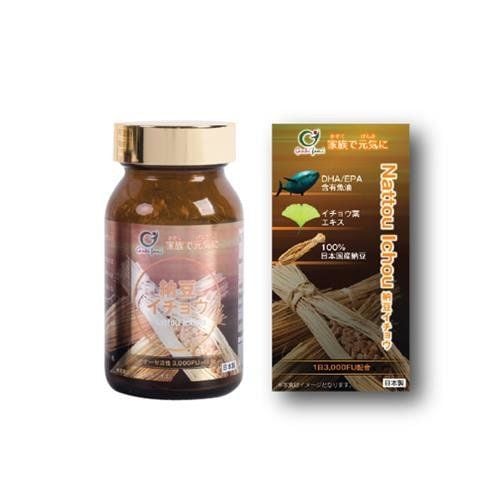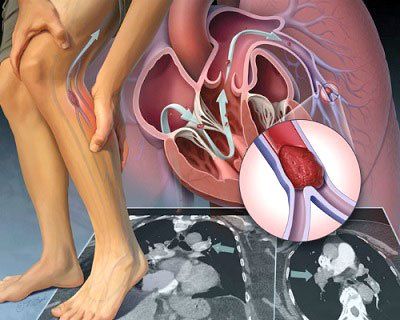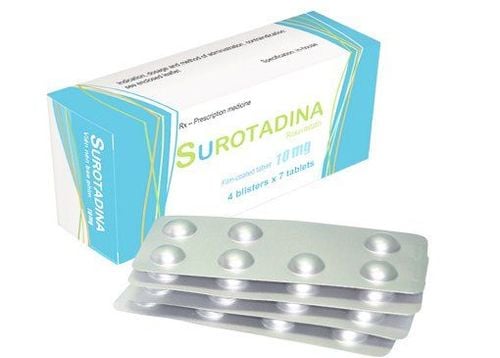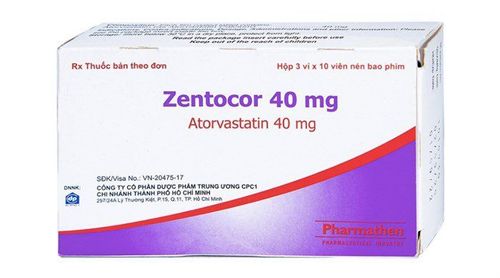This is an automatically translated article.
The article was professionally consulted with Master, Doctor Nguyen Tung Hoanh - Interventional Cardiologist - Department of Resuscitation - Emergency - Vinmec Nha Trang International General Hospital.Diet for people with heart disease plays a very important role. The change of processing materials as well as the composition of nutrients in the diet have a significant impact on the heart. Read more articles below to understand how important diet is for people with heart disease.
1. The importance of nutrition in cardiovascular disease
Cardiovascular disease generally refers to coronary artery disease, peripheral artery disease, cerebrovascular accident, and thoracic and abdominal aortic aneurysms. In our daily lives, we are exposed to many identified risk factors for cardiovascular disease, but much of the focus is on diet and lifestyle. The main risk factors stem from smoking, high blood pressure, dyslipidemia, overweight and obesity, diabetes, and a sedentary lifestyle. These risk factors tend to occur together and have a synergistic effect. The more risk factors, the greater the chance of cardiovascular events.
These risk factors are modifiable and controllable by stopping smoking, correcting dyslipidemia, controlling blood pressure, controlling weight, increasing physical activity... and importantly not Poor is adjusting the diet in the prevention and treatment of diseases.
In fact, a healthy lifestyle, a scientific diet can reduce the risk of heart disease or stroke by up to 80%. However, there is no single food that will make you healthy, so your overall diet is more important than specific foods. Instead of eating fried foods, packaged meals, and sugary snacks, opt for a heart-healthy diet that's built on natural food sources.
Whether you are looking to improve your heart health, have been diagnosed with heart disease, high cholesterol or high blood pressure, these healthy diet tips can help you manage the disease and reduce heart attack risk.
2. Diet for people with heart disease
2.1. Smart fat choices Instead of avoiding fat entirely in your diet, try replacing unhealthy fats with good fats. Some of the most important improvements you can make are:
Cut out artificial trans fats: In addition to raising your LDL, or “bad” cholesterol levels, which can increase your risk of heart attack and stroke, Artificial trans fats also lower levels of HDL or “good” cholesterol, which can put you at increased cardiovascular risk. Limit saturated fat: One of the diets for people with heart disease is to limit saturated fat. Saturated fats are mainly found in tropical oils, dairy and red meat which should be limited to no more than 10% of daily calories. Drink milk in moderation and vary the sources of protein in your diet, choosing fish, skinless chicken, eggs and vegetarian protein sources where possible. Eat more healthy fats: Eat omega 3 fatty acids every day from fatty fish like salmon, trout, and herring or from flaxseeds, kale, spinach, and walnuts. Other sources of healthy fats include olive oil, avocados, nuts, and nut butters. Limit red meats such as beef, veal, lamb, lamb, pork, rabbit and other game meats) to a maximum of 350g (cooked weight) per week; and avoid sausages and hams. Removing the skin of poultry is one of the best diets for people with heart disease. Limit fried foods and processed foods. Replace energy from the saturated fats of butter, coconut oil, and cream with healthy unsaturated fats from seeds and plants such as extra virgin olive oil, avocado, sunflower, canola, safflower, peanut, soybeans and sesame; foods such as nuts, seeds, avocados, olives, and soybeans. Eat oily fish at least once a week.
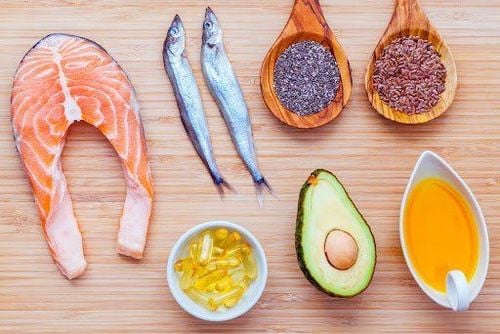
Cần lựa chọn hợp lý nguồn chất béo trong chế độ ăn cho người bệnh tim
2.2. Don't replace fat with sugar or refined carbs When cutting down on foods that have cardiovascular risks, like unhealthy fats, it's important to replace them with healthy alternatives. For example, replacing meat with fish or chicken, can make a positive difference to your health. However, switching animal fats to refined carbohydrates will not reduce the risk of cardiovascular disease.
Your body does not need extra sugar because it already gets all it needs from the natural sugar found in food. Sugary foods and refined starches just add a lot of empty calories that are bad for your heart as well as affect your waistline.
Instead of sugary soft drinks, white bread, pasta and processed foods like pizza, choose unrefined whole grains like whole wheat or multigrain bread, brown rice, barley, seeds quinoa, bran cereals, oatmeal and non-starchy vegetables.
2.3. Diet for heart disease patients should be rich in fiber Supplementing with adequate fiber is a diet for people with heart disease, because it will reduce "bad" cholesterol and provide nutrients to help protect the heart, lose weight . Fiber stays in the stomach longer, so the feeling of fullness stays with you longer, helping you eat less. Fiber also moves fat through your digestive system faster so less is absorbed. And when your body gets enough fiber, you'll also have more energy to exercise.
Insoluble fiber is found in whole grains, wheat cereals and vegetables like carrots, celery and tomatoes. Sources of soluble fiber include barley, oatmeal, beans, nuts, and fruits like apples, berries, citrus, and pears.
2.4. Stay away from salt and processed foods Eating a lot of salt can contribute to high blood pressure, which is also a major risk factor for cardiovascular disease. A low-salt diet can help you control blood pressure, improve shortness of breath, and avoid edema. There are many simple ways to reduce salt in your meals such as:
Reduce canned or processed foods: Most of the salt you eat comes from canned or processed foods even poultry or other meats You still often have the habit of adding salt during processing. Eating fresh foods, finding unsalted meats, and making your own dishes can significantly reduce sodium intake. Use spices for flavor: Cooking yourself allows you to have greater control over your salt intake. Take advantage of the many delicious salt alternatives. Try fresh herbs like basil, thyme, or chives. Choose seasonings and packaged foods carefully, looking for foods that are labeled sodium-free, low-sodium, or unsalted. Better yet, use fresh ingredients and cook without salt. Check the sodium content of foods and choose products with the lowest sodium content. 2.5. Control the amount of water When the heart is not working properly, the amount of water that is not metabolized in the body will be retained, causing edema. Patients with heart failure should reduce water intake when experiencing symptoms of shortness of breath, edema. Patients should drink up to 1 liter/day and it is best to drink only when thirsty. The amount of water to drink outside of meals must be equal to the amount of urine in 24 hours plus 300 ml.

Ngoài chế độ ăn, người bệnh tim cần quan tâm đến lượng nước đưa vào cơ thể
2.6. Do not use alcohol, beer, tobacco Alcohol, alcoholic beverages, coffee containing nerve depressants will directly harm the heart muscle, making the disease condition worse.
Tobacco contains nicotine which stimulates the secretion of epinephrine into the blood making the heart work harder. Since then, blood vessels contract rapidly, causing increased blood pressure, arterial edema, creating a feeling of shortness of breath, chest tightness, and chest pain for heart patients.
2.7. Balance the amount of potassium in the diet Many studies have shown that the most important mineral for maintaining heart function is potassium. Diuretics are often used by heart failure patients during treatment, so they will significantly reduce the amount of potassium in the body. Supplementing this mineral during treatment through a diet rich in vegetables and fruits such as bananas, broccoli, avocados is essential.
2.8. Control your portion sizes How much food you eat is just as important as what you eat. Overeating and eating until you feel too full leads to taking in more calories than necessary.
Follow some simple tips to control portion sizes and shape a diet that is good for your heart and belly:
Use small plates or bowls. Choose to eat nutrient-dense, low-calorie foods, such as fruits and vegetables. Eat less high-calorie, high-sodium foods such as processed foods, fast foods, and refined foods.
Tracking portion sizes is equally important. Some things to keep in mind:
A serving is a specific amount of food, determined by common measurements such as cups, spoons or pieces. For example, a serving of meat, fish or chicken is about 5-6 grams, about the size and thickness of a deck of cards. The recommended number of servings for each food group can vary depending on your diet or guidelines you're following.

Chế độ ăn cho người bệnh tim cần được theo dõi khẩu phần ăn
3. Some foods are good for heart health
While there is no magic food that will reduce your risk of developing heart disease, there is evidence that certain foods are important for heart health. Include:
Oily fish: Such as mackerel, sardines, tuna and salmon contain omega-3 fatty acids. This type of fat has been shown to lower triglycerides (a type of fat) and increase HDL-cholesterol levels, improve the elasticity of blood vessels and thin the blood, making it less likely to clot and block the flow of blood. run. Certain vegetable oils: Such as corn, soybean, safflower (which contain omega-6 fatty acids) and those that contain omega-3 fatty acids (such as canola oil, olive oil). All of these can help lower LDL cholesterol when used in place of saturated fats like butter. Fruits and vegetables: The fiber, potassium, and other micronutrients (such as antioxidants) in fruits and vegetables help protect against heart disease. It's also an important source of folate - which helps reduce blood levels of the amino acid homocysteine, which has been linked to an increased risk of heart disease. Grains: A diet rich in fiber from whole grains has been linked to lower LDL cholesterol and a reduced risk of heart disease. Foods high in soluble fiber (for example, oats, legumes, and barley) are great for lowering total cholesterol levels. Some foods that contain unrefined carbohydrates are low in blood sugar — such as whole-grain breads and cereals, legumes, some types of rice and pasta, and most fruits and vegetables, too. Helps lower blood triglycerides and glucose (sugar) levels, helps control diabetes and reduces heart disease. Legumes, nuts, and seeds are great sources of plant-based protein, fiber, healthy fats, and micronutrients to help lower your cardiovascular risk. The tea helps prevent fat buildup in the arteries, and can also act as an anticoagulant and improve the dilation of blood vessels to allow for increased blood flow. Foods that contain vitamin E: Some studies indicate that vitamin E acts as an antioxidant, helping to protect against LDL cholesterol. Good sources of vitamin E include - avocados, dark green vegetables, vegetable oils and whole grain products. Eat foods that contain vitamin E instead of supplements. Garlic is a compound in fresh garlic (called allicin) that has been found to lower total and LDL cholesterol in the blood, thereby reducing the risk of heart disease. Plant sterol-rich foods - a daily intake of 2–3g phytosterols/stanols reduces LDL cholesterol levels by about 10% in healthy people who have high cholesterol or diabetes. This equates to 2-3 servings of phytosterol-rich foods like margarine spreads, yogurt, milk and breakfast cereals. In short, the diet for people with heart disease plays a very important role. Once you've been diagnosed with heart disease or high blood pressure, these healthy diet tips can all help you better manage your disease and reduce your risk of a heart attack.
Please dial HOTLINE for more information or register for an appointment HERE. Download MyVinmec app to make appointments faster and to manage your bookings easily.




